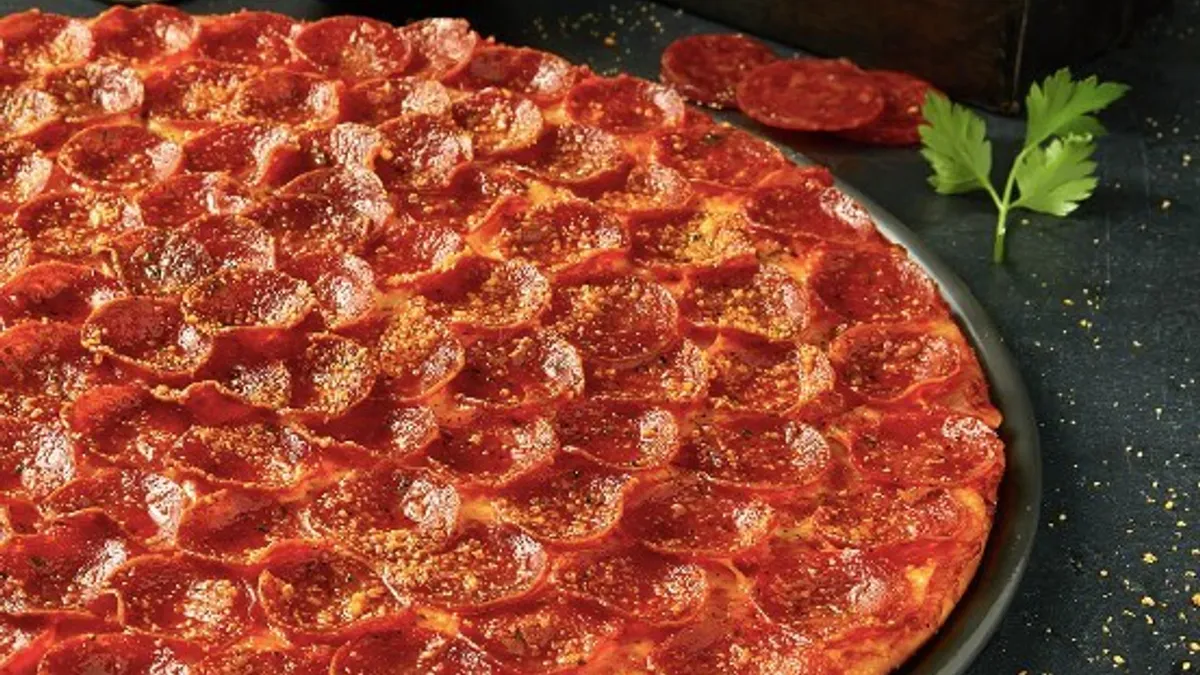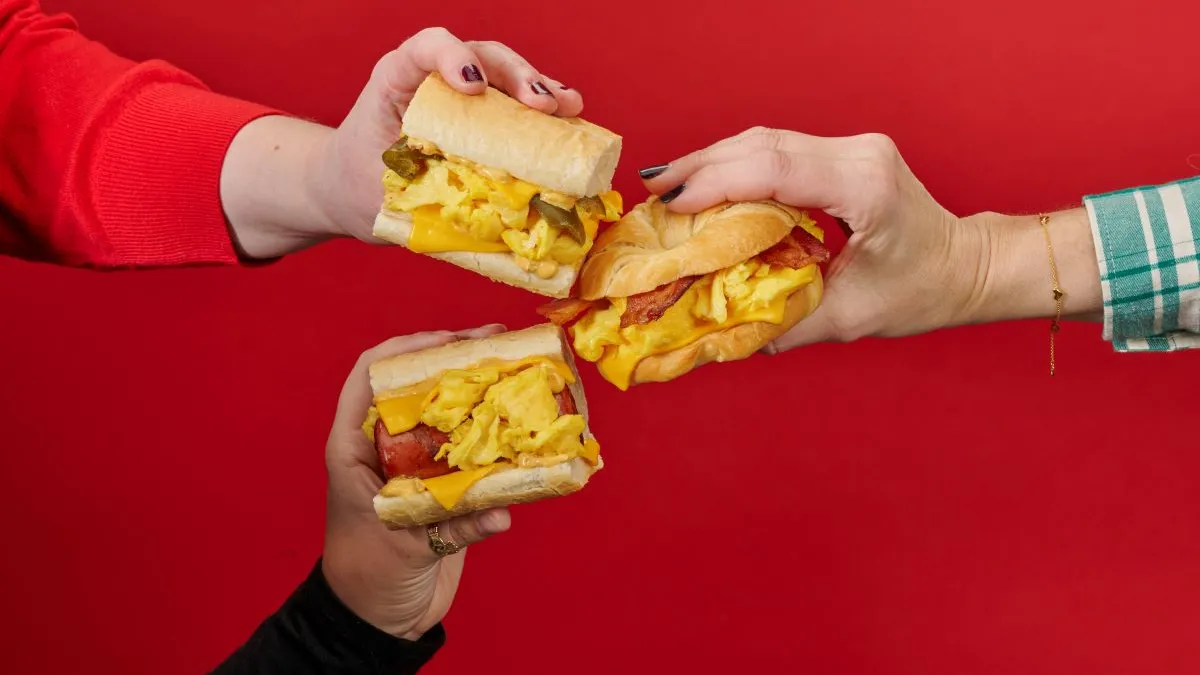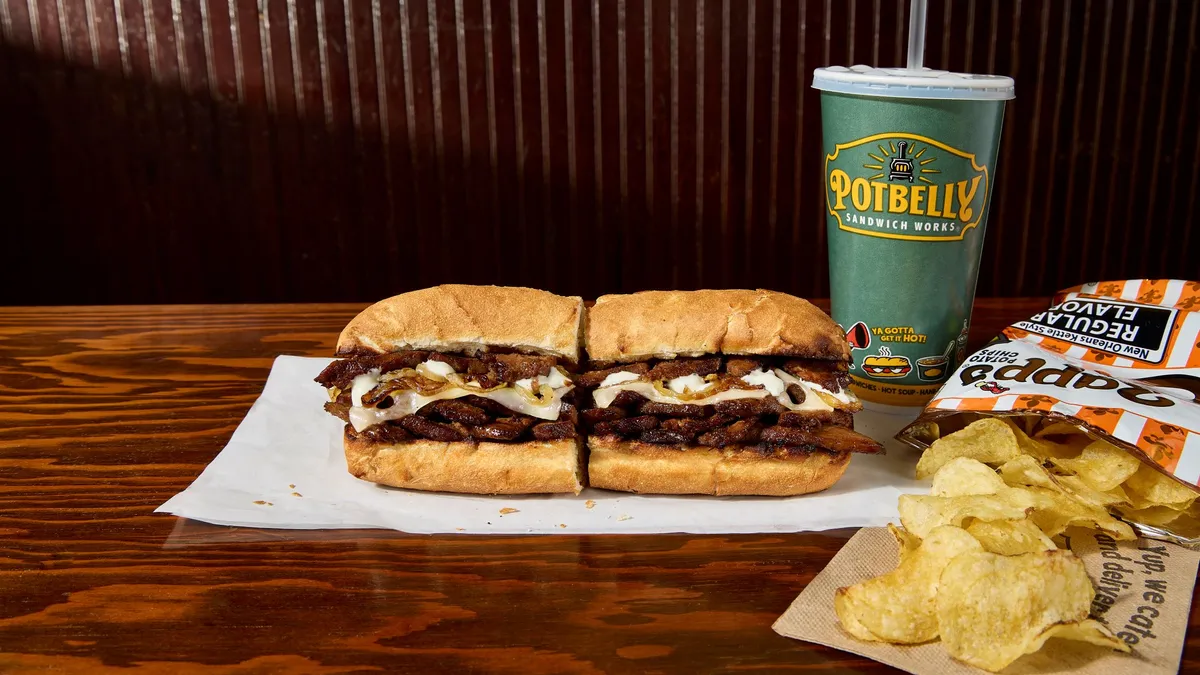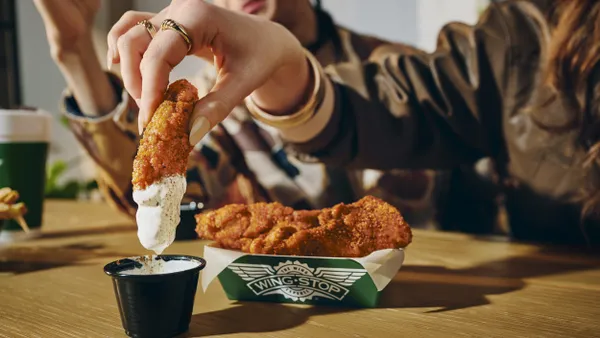In July, Donatos Pizza announced it was partnering with food tech company Appetronix to develop a fully-autonomous pizza vending machine.
With an upcoming Columbus, Ohio, launch, the pizza chain said the new vending machine will increase speed of service and cook pizzas with greater precision, consistency and order accuracy — leading to the development of a standalone, fully autonomous restaurant.
The company is currently working on a prototype, and aims to test the machine this year and “grow rapidly in very unique; high pedestrian locations,” Donatos CEO Tom Krouse and Jeff Baldwin, vice president of development and franchising, wrote in an emailed statement to Restaurant Dive.
The vending machine “drives convenience in unique non-traditional locations where we would not be able to open a traditional restaurant,” said Krouse and Baldwin.
High-tech vending machines that make and serve restaurant food — like the one Donatos is developing — have existed in European and Asian markets for a number of years, but have not yet become widely adopted in the U.S., said Stephen Zagor, a restaurant and food business consultant and assistant professor at Columbia Business School. That’s because people in the U.S. don't often have positive feelings toward vending machines, he said.
When people in the U.S. see a vending machine, they question how long the food has been there, and how fresh it might be, said Zagor. The more complicated the vending machine, the less of the mechanism people are able to see — and if you don’t see, you don’t know, he said.
“I think part of the challenge that Donatos will face, as well as any company does, is, our opinion of what a vending machine is and what a vending machine produces is not very high,” said Zagor.
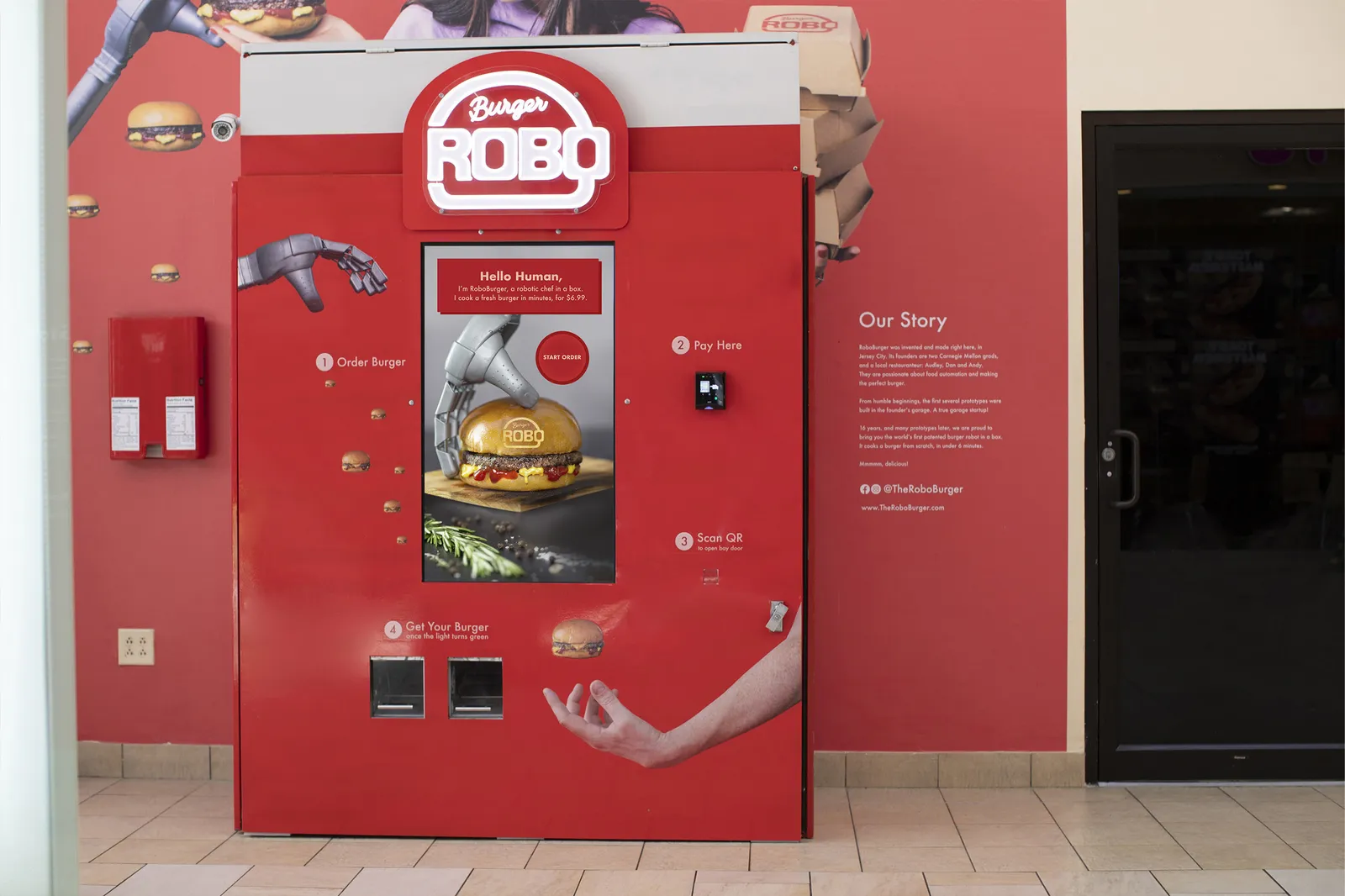
An emerging market
Analysts project the U.S. hot food vending machine market will rise over the next decade. A 2022 report from Future Market Insights projected the U.S. and Canada market to grow from $4.1 billion in 2022 to $7.8 billion in 2031. But while there is a lot of potential, there are a lot of challenges companies face in making their vending machines appealing to customers.
Interest in vending machines has grown with the emergence of ghost kitchens and virtual brands, as many restaurants have been rethinking their route to expansion, Dorothy Calba, senior analyst at Euromonitor International, wrote in an email to Restaurant Dive.
Foodservice vending machines allow brands to expand with much lower startup and labor costs, since they don’t require paying as many employees, said Calba. However, with those savings come utility, maintenance and location-related costs that can add up, she said.
Expanding beyond four walls is critical for restaurants in today’s market, said Zagor. Automated vending machines could be the latest iteration of efficiency-focused experiments restaurants have been investing in, such as delivery services, pickup and ghost kitchens, he added.
“That’s what’s producing the revenues that restaurants need to survive and manage the new labor world,” said Zagor.
More and more vending machine startups that produce restaurant food have emerged in the U.S. Farmer’s Fridge, which sells fresh salad through automated vending machines, has expanded its footprint in recent years at airports, hospitals and offices. Other companies bake fresh bread, cook burgers, brew high-quality coffee or dispense pasta kits.
Not all have seen success, however. Last year, DoorDash shut down robotic salad maker Chowbotics after purchasing the company the year prior. DoorDash closed Chowbotics as part of its innovation cycle and investment strategy, with reports that the robots weren’t meeting the company’s internal benchmarks.
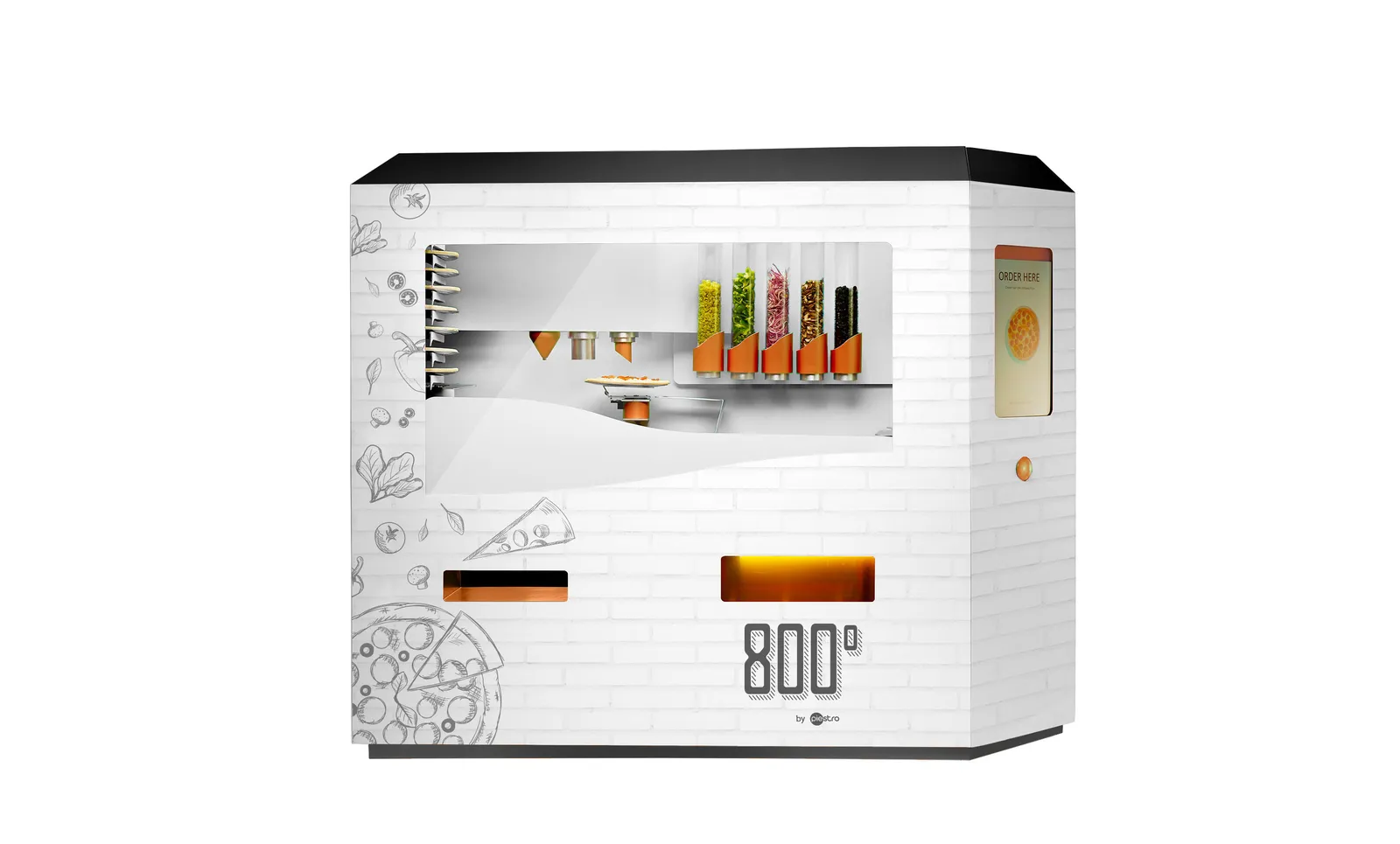
Opportunities for pizza and more
Vending machines that actually cook food internally have been most common so far in the pizza industry, said Calba. 800 Degrees Pizza also expanded in the automated vending machine space in 2021 through a partnership with Piestro.
That’s because pizza pies include simple ingredient combinations and cooking them can be standardized with relatively few steps involved in the process, Calba said.
Pizza could be an ideal food for automated vending machines since they can be frozen, reconstituted and managed in a process that is very simple and can still yield a decent product at the end, Zagor added. Pizza has even been created by 3D printers.
Other prepared food vending machines, such as Subway’s sub fridges or Farmer’s Fridge fridges, are often premade and stocked machines, said Calba.
But according to Krouse and Baldwin, the possibilities of serving other food through automated vending machines “are endless,” adding Donatos’ partner Appetronix has an Asian cuisine unit that will be hitting the Canadian market in October. Still, the company believes pizza is the best food category for the technology.
“Everyone loves pizza,” said Krouse and Baldwin. “Pizza is one of the top two categories in foodservice in the U.S. and has mass appeal.”
Through Donatos' model, customers will use a touch screen to order. The units are fully automated on the inside and only require an associate to reload the ingredients at intervals throughout the day, said Krouse and Baldwin. The goal is for customers to see the machine bake the pizza within five to six minutes, a cook time that is consistent with its restaurants, the executives added.
Since the onset of the COVID-19 pandemic, vending machines are sometimes considered to be a safer food option since they allow people to avoid human-to-human contact, Zagor said.
But the biggest draw to consumers may be convenience. Vending machines are often open all hours of the day, serving consumers a fully prepared pizza in only a few minutes, said Calba.
The speed and convenience is great for people at popular grab-and-go locations, such as airports and hospitals, during off-hours when many eateries are closed, he said. Calba added they could also be attractive at transportation hubs, college campuses and sports venues.
“It’s consistent, it’s fast, it’s what you’re expecting,” Zagor said. “It meets the food moment that you need.”
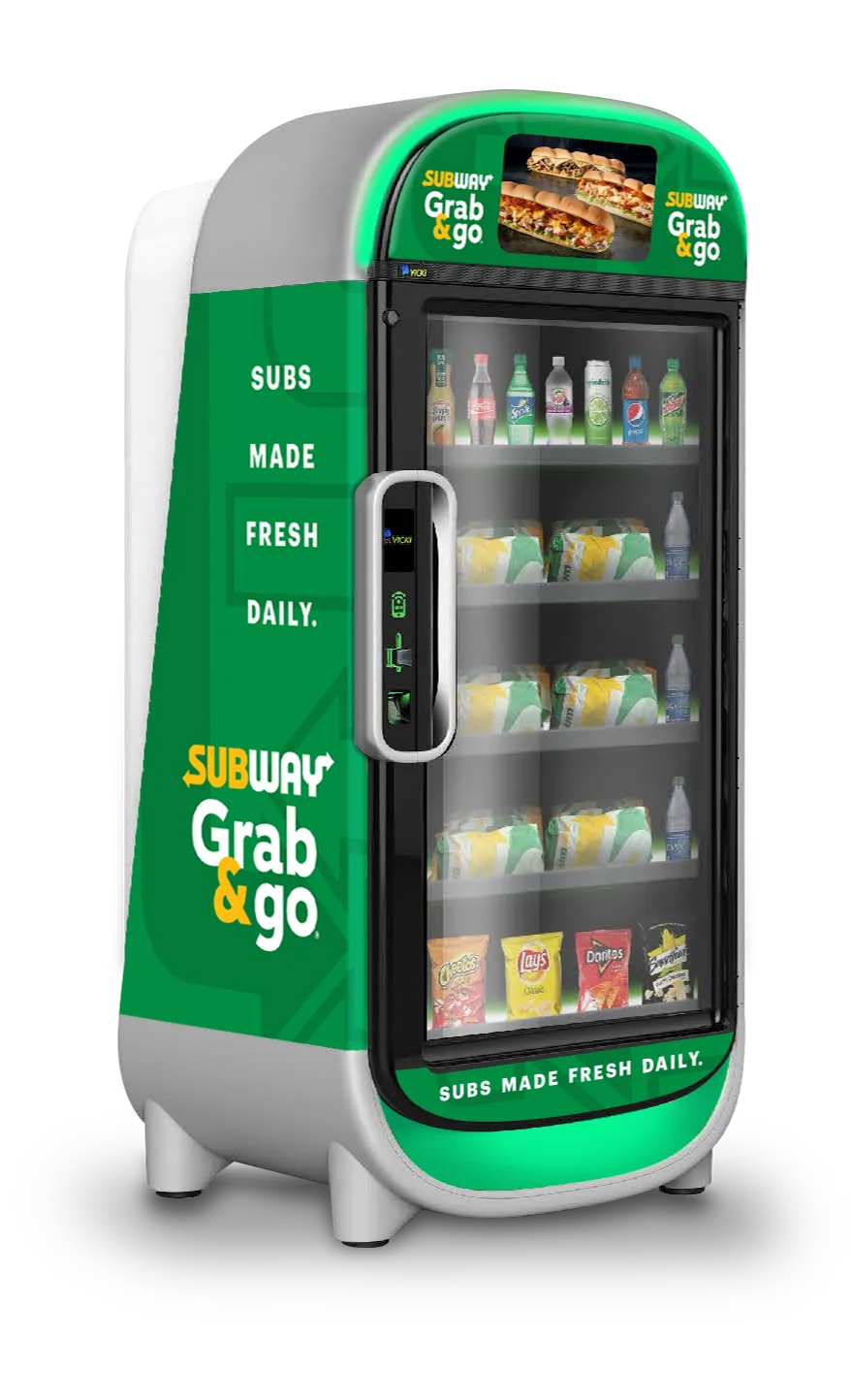
Overcoming challenges
While there is potential in the vending machine space, Donatos will need to overcome a number of challenges to achieve success. The pizza market in general is very competitive and consumers, for the most part, have already chosen sides, said Calba. They may experiment with novel ideas like vending machines once, but it will be difficult for companies to turn them into repeat customers, she said.
“People are often quite loyal to where they are used to buying pizza and when they want a lower cost or faster option they go to a well-known chain,” said Calba.
Also, Calba added, some pizza vending machines have struggled to meet quality expectations, which has deterred growth.
Beyond building the first unit and getting in to test, Donatos faces other challenges in its vending machine plans, Krouse and Baldwin said. The company needs to identify the right locations to expand as quickly as possible. And, after the prototype is completed, they will look for opportunities to optimize the vending machine to be smaller and less costly, and build capabilities for customization and speed, the executives said.
To achieve success in the U.S., automated vending machines can’t just look like a box in the corner, they have to look great, said Zagor.
“Vending has to have the elements of attraction, it has to have marketability, it has to have excitement attached to it,” he said. “I think that’s where it can actually persevere and even excel.”
Vending machine pizza may not compare to the pies made at a neighborhood Italian restaurant or be appealing in a city like New York City, where there’s pizza sold on every corner, said Zagor. But if the vending machine can produce the pizza consistently and quickly — like a fast food drive-thru — it can be an attractive option, he said.
“Overall, foodservice is continually evolving to provide consumers prepared food wherever they may be,” said Calba. “While these types of machines have their limits, when deployed in the right area and with a good quality to price ratio they have potential for growth.”



